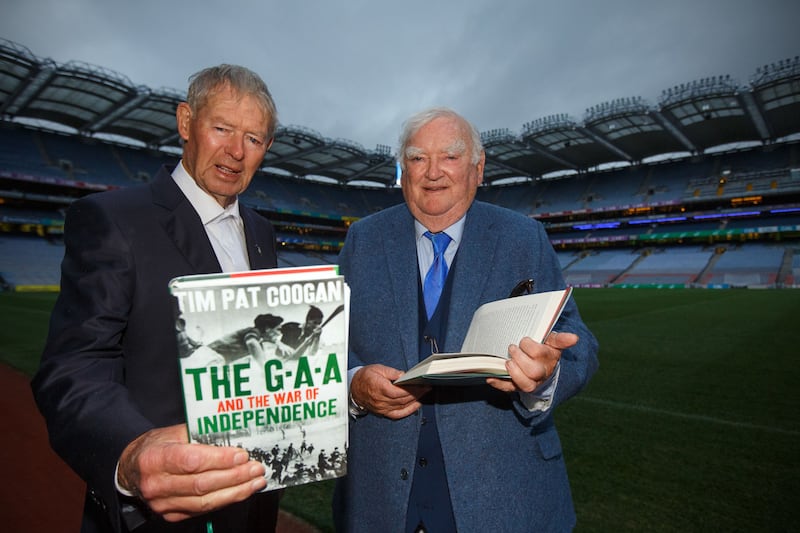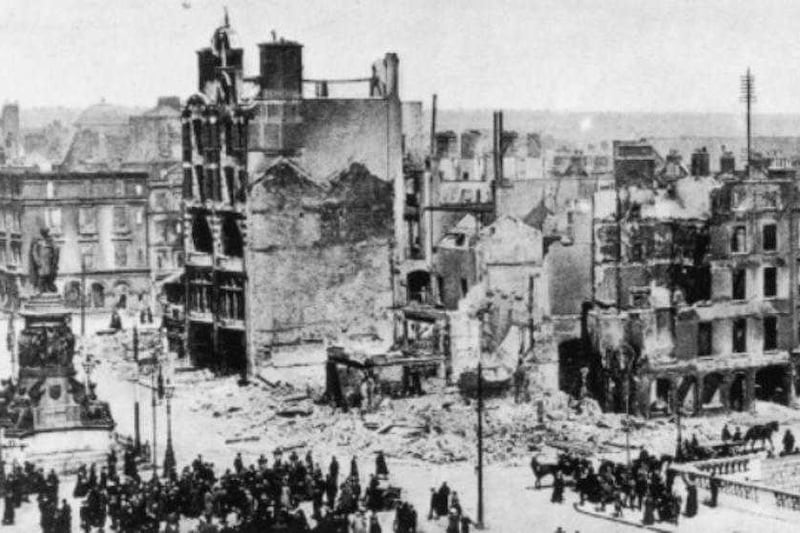THE criminal and irresponsible attempts to generate sectarian warfare in the north recently have tended to obscure the significance of the most important event to occur during the rioting - taking the census.
Let me explain why. For decades there was a casual assumption that the population of the six counties was as it was when Ireland was partitioned: roughly two thirds Protestant to one third Catholic.
But when two Dublin demographers Cormac Ó Gráda and Brendan Walsh decided to apply a test to the 1991 census under the category `not stated', they decided that an entry showing both a knowledge of the Irish language and above average fertility, indicated the presence of a Catholic, possibly keeping their heads down in a loyalist area.
They found that this percentage when added to the total of Catholics who had openly declared their religion, meant that the
overall population of Catholics, rose from the late 30s to over 40 per cent.
This ought not have come as a surprise to anyone, as Catholic or nationalist numbers had been on the increase, dominating every section in education: primary secondary and tertiary, taking over the electorate west of the Bann, and out numbering Protestants even in Coleraine university, built specifically to prevent investment in Derry.
However, the demographers' findings were not welcome to decision taking Dublin, the late Dr Garret FitGerald was especially displeased, and there the population issue rested until 2001.
At that time, I had an off the record conversation on the touchy subject with a cabinet member who would later become Taoiseach and he opined that Catholic numbers were at least 48 per cent and possibly more.
The census returns duly showed an increase on the 1991 figure, but only to the mid 40s. However, the `not stated' figure on the census form had morphed from 12 per cent of total population to 17 per cent, and a note read that these were thought to be mainly Protestants.
But I remember at the time recalling a story told to me by Harry Diamond, who preceded Gerry Fitt in Belfast's Dock constituency.
Being republican and Labour, Harry could do very little for his Catholic constituents, relying for the crumbs he could obtain from a top civil servant.
One morning he called to Stormont to find his friend chuckling over his task for the day.
A unionist backbencher had asked Lord Brookeborough for the statistics on Catholics who had joined up during World War II, as opposed to loyalists, clearly hoping to show Catholics had shirked their duty.
In fact, as the backbencher should have realised, because of the `reserved occupation provision', some Protestants had been able to stay home in jobs, while the unemployed Catholics had not, and had outperformed in decorations won.
The Orange Order had restricted marches during the war because it did not want Whitehall to catch sight of the numbers of able bodied Sons of Ulster, who, to coin a phrase, were not marching toward the Somme.
The civil servant was simply transferring the numbers so as Catholics became Protestants and vice versa.
If Harry wanted to continue to obtain what little favour he could for constituents he had to stay silent, and so the bogus statistics appeared.
Decades later, the Good Friday Agreement contained a provision, the petition of concern, which was to be used should either community attempt to foist some major injustice on the other. It was a safeguard for minorities be they Catholics or in the future, Protestants.
While maintaining the charade of the `Chuckle Brothers' era for the optics, the petition was used 81 times, sometimes for parish pump issues to frustrate nationalist proposals.
Finally Sinn Féin pulled down the shutters, and Stormont collapsed until, in an effort to have some parliament, any parliament, the `cash for ash scandal' was ignored, and it was restored.
The DUP would not be in power in any other west European democracy other than the six counties statelet, were it not for
Dublin and London's desperate efforts to maintain the status quo at all costs.
How long can the effort last?
The decision to support Brexit was inimical to the interests of both Protestant and Catholic.
The fallout has helped to highlight the gradual disentanglement of England from Ireland's affairs. It was Margaret Thatcher, described to me by the UVF leader Gusty Spence as a "cow", who first threw true believer loyalists under the bus.
Recently Boris Johnson continued the process which given population growth is irreversible.
Dramatic change may come as soon as next year's assembly elections, which could conceivably see a Sinn Féin First Minister returned to Stormont.
Even if it does not, population growth will continue on the nationalist side whether loyalists, London, or sections of decision taking Dublin like it or not.
In light of these circumstances, I would earnestly advocate that the Friends of Ireland grouping of Congressmen, on Capitol Hill Washington, scrutinise the handling of the census taking of 2021, with a very keen eye, both while the figures are being processed and after the result is declared.
We are coming to the close of a period in Anglo/Irish history of momentous significance - the ending of a process that has gone on since the plantations.
* Tim Pat Coogan is a writer, broadcaster and newspaper columnist and former editor of The Irish Press newspaper. He has written biographies of Michael Collins and Éamon de Valera, with the focus of his other books Ireland's nationalist/independence movement in the 20th century.







